Shannara is a series of high fantasy novels written by Terry Brooks, beginning with The Sword of Shannara in 1977 and concluding with The Last Druid which was released in October 2020; there is also a prequel, First King of Shannara. The series blends magic and primitive technology and is set in the Four Lands, which are identified as Earth long after civilization was destroyed in a chemical and nuclear holocaust called the Great Wars. By the time of the prequel First King of Shannara, the world had reverted to a pre-industrial state and magic had re-emerged to supplement science.

The Elfstones of Shannara is a 1982 epic fantasy novel by American writer Terry Brooks. It is the first sequel to The Sword of Shannara and the second book in The Original Shannara Trilogy. It expands upon the history of the Elves, which was only hinted at in the preceding story, and follows Wil Ohmsford, grandson of Shea and inheritor of the Shannara Elfstones.

The Wishsong of Shannara is an epic fantasy novel by American writer Terry Brooks. It is the final novel in the Original Shannara Trilogy, with the other two being The Sword of Shannara and The Elfstones of Shannara. The story revolves around Jair and Brin Ohmsford, the children of the main characters from The Elfstones of Shannara: Wil Ohmsford and Eretria. The siblings, each possessing an inherited magic, must save the Four Lands from the evil magic within a tome called the Ildatch.

First King of Shannara is a 1996 epic fantasy novel by American writer Terry Brooks.
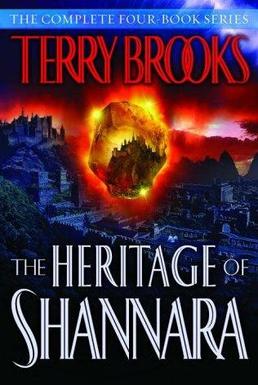
The Heritage of Shannara is a series of four fantasy novels by Terry Brooks, set hundreds of years after the original Shannara trilogy. Unlike the original trilogy, however, this series is all one, cohesive story, in contrast to the three isolated stories of the originals. It is set in a future Four Lands in which the Federation of the Southland has driven off the Elves, enslaved the Dwarves, and outlawed magic. Only the rebel Free-born, led by Padishar Creel, dare to resist. The series begins with The Scions of Shannara, when the Ohmsford descendants are summoned by the shade of Allanon to combat the Shadowen that have been poisoning the land, each charged with a quest only they can embark on. The story continues with The Druid of Shannara, The Elf Queen of Shannara, and concludes with The Talismans of Shannara.
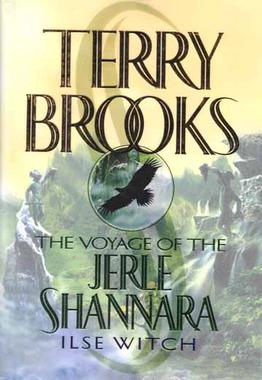
Ilse Witch is a fantasy novel by American writer Terry Brooks, the first book in The Voyage of the Jerle Shannara fantasy trilogy. First published in 2000, it was the first novel in which Brooks described the use of futuristic technology, including airships as well as robots and lasers from the Old World. A conversation between the Druid Walker Boh and the Shade of Allanon that was edited from Ilse Witch was published as part of Unfettered, a collection of fantasy short stories.
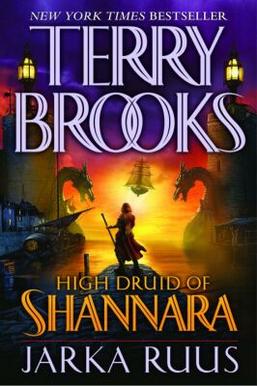
Jarka Ruus is a fantasy novel by American writer Terry Brooks. It is the first book in the High Druid of Shannara trilogy in Brooks' Shannara series, and takes place 20 years after the events of The Voyage of the Jerle Shannara. It was first published in 2003.

Tanequil is a fantasy novel by American writer Terry Brooks, part of the High Druid of Shannara trilogy of the Shannara series. First published in 2004, the book takes place immediately after the events of Jarka Ruus and is followed by the novel Straken.

Straken is a fantasy novel by American writer Terry Brooks, the third book in his High Druid of Shannara trilogy. First published in 2005, it takes place immediately after the events of Tanequil.

The Sword of Shannara Trilogy consists of the first three Shannara novels by Terry Brooks. Though not originally written as a trilogy, the novels were published as The Sword of Shannara Trilogy by Del Rey Books.

The Talismans of Shannara is a fantasy novel by American writer Terry Brooks, the fourth in his tetralogy The Heritage of Shannara.

The Druid of Shannara is a fantasy novel by American writer Terry Brooks. The second book of his tetralogy of The Heritage of Shannara, it was first published in 1991.

The Dark Wraith of Shannara is a graphic novel produced by Terry Brooks in his Shannara series. The story is set several years after the events of The Wishsong of Shannara and Indomitable.

The Dark Legacy of Shannara is the title of a series of novels written by Terry Brooks. The first book, Wards of Faerie, was released by Del Rey Books in August 2012. These novels take place a century after the High Druid of Shannara trilogy, telling the quest of Khyber Elessedil to recover the lost Elfstones.

"Indomitable" is a fantasy short story by Terry Brooks in his Shannara series, and takes place two years after the events in The Wishsong of Shannara. It was first published in the 2003 collection Legends II.

Allanon's Quest is a fantasy short story by Terry Brooks in his Shannara series. It is the first in a trilogy of short stories that make up the Paladins of Shannara series, first published in 2012.

The Shannara Chronicles is an American fantasy drama television series created by Alfred Gough and Miles Millar. It is an adaptation of The Sword of Shannara trilogy of fantasy novels by Terry Brooks. It follows three heroes as they protect an ancient tree to stop the escape of banished demons. The series was filmed in the Auckland Film Studios and on location elsewhere in New Zealand.
This is the complete list of works by American fantasy author Terry Brooks.
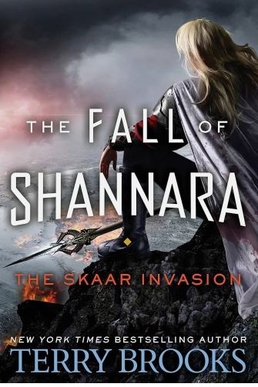
The Skaar Invasion is a 2018 fantasy novel by Terry Brooks, the second installment in his Fall of Shannara series.
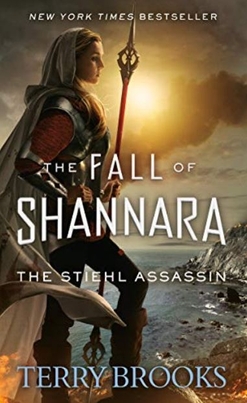
The Stiehl Assassin is a 2019 fantasy novel by Terry Brooks in his Shannara series. It is the third book in the Fall of Shannara series and was a New York Times bestselling novel.



















